As the banking world sets its sights on the ISO 20022 standard, what key lessons from past migrations can banks use for future successful ones? Our transformation experts at Avertim share the insights gained from completed projects.
After initially postponing T2/T2S (Target 2/Target 2 Securities) migration from November 2022 to March 2023, the European banking market has now successfully big bank-ed into the XML world of payments for the Euro currency.
This means all banks of the Eurozone are now capable of receiving payments and bank statements under the ISO 20022 standard. It was closely followed in June 2023 by the CHAPS migration to ISO 20022 messaging. CHAPS is the Real Time Gross Settlement system (RTGS) for the UK , meaning that the banks are now up to receiving payments and statements in the GBP currency.
ISO 20022 banking standardisation so far: what have we learned?
Many RTGS are yet to migrate to the new XML format as the end date of the migration format is November 2025, by which time all member banks must comply. But what are the outcomes of the first 2023 migrations and how can banks leverage those for their future migration on other currencies?
Based on the successful experiences of key international clients, our banking experts at Avertim detail some of the key points of a secure payments migration transformation progam.

Partnering the IT and Business Perspective
The first ISO migrations required banks to prepare a unique approach. Input and expertise from the payments functions and IT was vital to structure the project, but it also required expertise from compliance and accounting.
Among other payment enhancement, the ISO migration mainly consists of a format change from MT (message text) to the MX format (XML or Extensible Markup Language). This makes it tempting to approach it as program led from a purely IT perspective. however, when testing comes to the table challenges arise.
Testing payments implies "end-to-end" testing: that means from payment initiation through to the compliance screenings, accounting booking and reconciliation. So no testing phase is successfully secure without full mastery of the payment process from a pure banking, or a business perspective.
Business must be involved to ensure that key operations requiring payments or banking statements are identified and subject to test cases. They are necessary to establish a real testing strategy covering the key functional use cases that only business knows.
Partnering these perspective strategies enables the various function to participate to ensure business continuity and mitigate the associated operational risk.
Keep compliance in the loop
The critical aspect must not be forgotten: sanctions and embargos rules and anti-money laundering obligations must be incorporated in the testing plans.
XML adoption provided enriched data fields. This means a broader set of data, and the need to adapt the control framework to mitigate the risk of fraud on this new ground. This topic is particularly sensitive during the transition period. In fact, until all RTGS systems have migrated to the new ISO format, the former MT and the new MX format will coexist, depending on the currency considered.
When shifting from MX to an MT circuit, some parts of the messages can be subject to data truncation which is a sensitive topic for all compliance today.
Tackling the challenge if payments testing - one step at a time
Testing modalities can be difficult. A payment messages required an initiator and a beneficiary, and potentially involves multiple intermediaries (banks & systems). Testing a payment in a "full testing environment" to simulate production conditions is almost impossible from an IT environment perspective.
That is where testing should be decomposed into various parts: the internal testing within the IT application; the A2A testing (application to application) essential to ensure all members of the payments chain are ready; and ultimately "penny tests" in production (real payments with cents or pennies) when it comes to sending payments on a network such as SWIFT.
This will validate the process of initiation and reception of the payment in the new format by its beneficiary in the same conditions as the go-live first day.
To secure these various testing phases, and coordinate all stakeholders, a testing manager should be appointed. This individual may also have a role in relaying the information provided by the Central Bank responsible for the migration of its RTGS, which also has its own testing schedule and requirements.
The IT aspect of testing should not be ignored. The switch to XML format is not neutral; when it comes to storage, for example, an XML message on average weighs 17 times more than its equivalent in MT. Performance testing should ensure that the IT systems can "carry the load" of these new messages. Infrastructure teams can be called upon if needed to address the topic.
Push it until the end: accounting and reconciliation
Ensuring that a beneficiary has received a payment message is not what end-to-end testing is all about. Accounting testing and reconciliation must not be forgotten either; firstly, to ensure that accounting schemes have not moved (non-regression testing), but also to set-up new accounting schemes in the case of new messages.
Appropriate counterparts should be raised early in the discussion to secure execution capacity and not be put in front of urgencies overnight.
From ISO 20022 to CHIPS: optimisation through capitalisation
From multinational banks, cross-border payments and reporting plus (CBPR+) migrations will benefit from the lessons learned from ISO migration for the Euro zone (Euro currency) and CHAPS migration (GBP migration).
Continuous learning could be a key in terms of method, even at an operational level. Roadmaps, use cases, B plans (go-live migration in Big Bank mode bears considerable risks !); these are some of many methodological aspects that ISO migration programs should encompass.
There is a lot to be learned from those first 2023 migrations. It is up to the relevant banks to capitalise o the learnings of these past efforts for the upcoming migrations, particularly the CHIPS migration in the US - which is due to to be implemented in April 2024. The die is cast and lessons learned are there for the taking.


